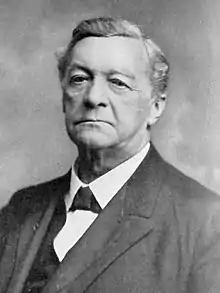1918 Danish Folketing election
Folketing elections were held in Denmark on 22 April 1918,[2] the first in which women could vote. The result was a victory for Venstre, which won 45 of the 180 seats in the Folketing, which had been expanded from 114 to 140 seats. Voter turnout was 75.5%.[3]
| |||||||||||||||||||||||||||||||||||||||||||||||||||||||||||||
All 140 seats to the Folketing 71 seats were needed for a majority | |||||||||||||||||||||||||||||||||||||||||||||||||||||||||||||
|---|---|---|---|---|---|---|---|---|---|---|---|---|---|---|---|---|---|---|---|---|---|---|---|---|---|---|---|---|---|---|---|---|---|---|---|---|---|---|---|---|---|---|---|---|---|---|---|---|---|---|---|---|---|---|---|---|---|---|---|---|---|
| |||||||||||||||||||||||||||||||||||||||||||||||||||||||||||||
 | |||||||||||||||||||||||||||||||||||||||||||||||||||||||||||||
| |||||||||||||||||||||||||||||||||||||||||||||||||||||||||||||
 |
|---|
| This article is part of a series on the politics and government of Denmark |
Electoral system
The Folketing was elected by a mixture of proportional representation in Copenhagen and first-past-the-post voting in single-member constituencies in the rest of the country. Outside of Copenhagen there were 20 regional levelling seats in addition to three national levelling seats, which were intended make the results more proportional.
The 1918 elections were the only ones in Danish history to feature this mixed system.[4][5] Future elections would be entirely using proportional representation with the single-member districts not affecting the party-level results.
Results
| Party | Votes | % | Seats | +/– |
|---|---|---|---|---|
| Venstre | 269,646 | 29.4 | 45 | +2 |
| Social Democratic Party | 262,796 | 28.7 | 39 | +7 |
| Danish Social Liberal Party | 189,521 | 20.7 | 32 | +1 |
| Conservative People's Party | 167,743 | 18.3 | 22 | +14 |
| Industry List | 11,934 | 1.3 | 1 | New |
| New Right | 4,764 | 0.5 | 0 | New |
| Voters of 1918 | 4,407 | 0.5 | 0 | New |
| Socialist Workers Party | 1,410 | 0.1 | 0 | New |
| Independent Social Democracy | 1,086 | 0.1 | 0 | New |
| Independents | 3,622 | 0.4 | 1 | 0 |
| Invalid/blank votes | 3,468 | – | – | – |
| Total | 920,397 | 100 | 140 | +26 |
| Source: Nohlen & Stöver | ||||
References
- As Højre.
- Dieter Nohlen & Philip Stöver (2010) Elections in Europe: A data handbook, p524 ISBN 978-3-8329-5609-7
- Nohlen & Stöver, p537
- The Parliamentary Electoral System in Denmark Folketing
- Adolph, Jensen (July 1918). "Rigsdagsvalgene i April-Maj 1918 med Suppleringsvalg i Tiden 1915-18". Danmarks Statistik.



